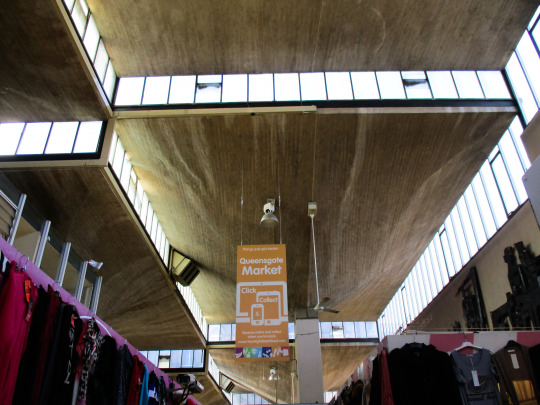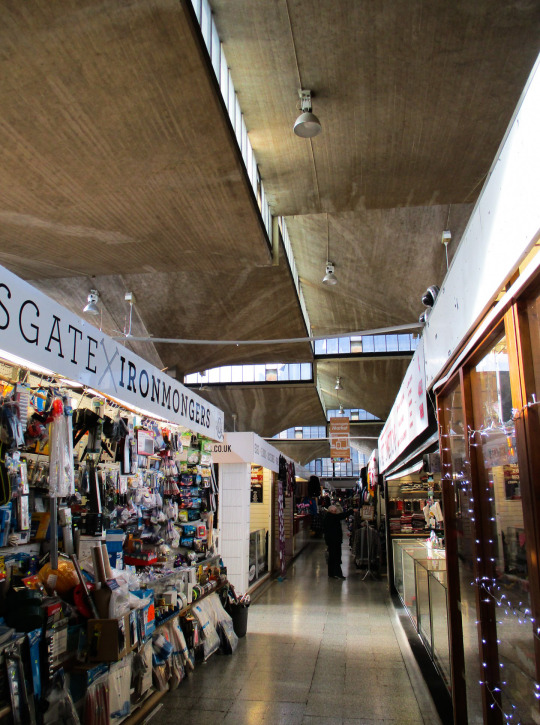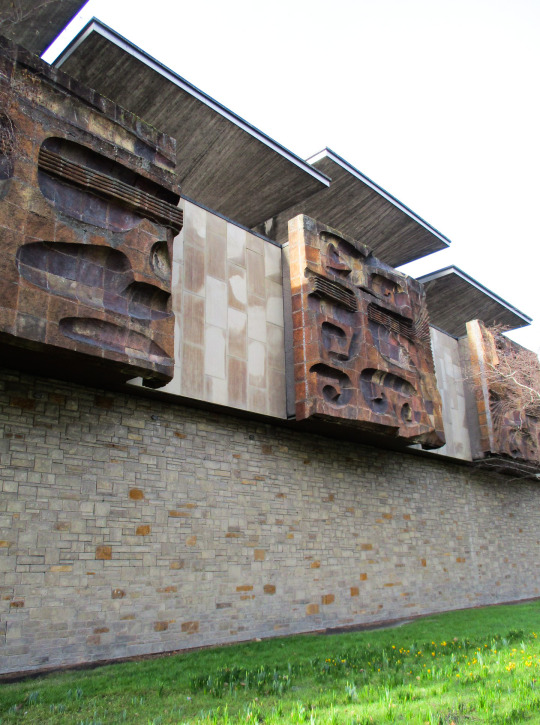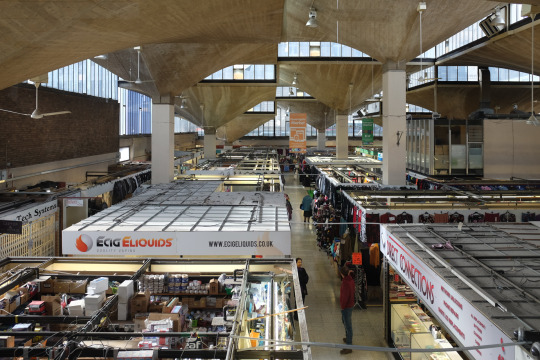#Queensgate Market
Text
New Post has been published on All about business online
New Post has been published on https://yaroreviews.info/2024/02/body-shop-to-shut-75-stores-and-cut-hundreds-of-jobs
Body Shop to shut 75 stores and cut hundreds of jobs
Getty Images
By Dearbail Jordan
BBC News
The Body Shop will close 75 shops in the UK over the coming weeks and cut 489 jobs, according to the firm overseeing its restructuring.
It means that, combined with cost-cutting at the company’s head office, between 750 and 800 people will be made redundant.
However, The Body Shop will keep 116 UK stores open.
The UK arm of the global beauty chain was put into administration earlier this month.
Shops will be closed over the next four to six weeks. FRP Advisory, which is managing the restructuring, said it would “support all impacted staff with claims to the Redundancy Payments Service”.
“In taking swift action to right-size The Body Shop UK store portfolio, we have stabilised the business,” said FRP Advisory’s Tony Wright.
“We remain fully focused on exploring all options to take the business forward.”
The Body Shop was a trailblazer – what went wrong?
The Body Shop was founded in Brighton in 1976 by the late Dame Anita Roddick who opened a single shop in the seaside town. Known for its natural beauty products and its stance against testing on animals, it expanded rapidly in the following years.
Dame Anita and her husband Gordon sold the business to French beauty giant L’Oreal in 2006, much to the chagrin of some loyal followers who viewed the French beauty giant’s business at odds with The Body Shop’s ethos.
Since then, The Body Shop has changed hands twice, most recently to private equity firm Aurelius in late 2023. Within weeks, it decided to place the UK arm in administration following poor sales over Christmas and January.
Wildly popular in the 1980s and 1990s, The Body Shop appeared to fall out of fashion as competitors arrived in the natural beauty market including Lush and Rituals.
The UK shops closing are:
Aylesbury
Banbury
Barnstaple
Basildon
Battersea
Bedford
Beverley
Bexleyheath
Blackburn
Blackpool
Bournemouth Commercial Rd
Bolton
Brixton
Broughton Park
Bury
Camberley
Carlisle
Carmarthen
Chippenham
Cirencester
Croydon
Didcot
Durham
East Kilbride
Edinburgh Gyle Centre
Edinburgh Princes Mall
Epsom
Fareham
Farnborough
Glasgow Braehead
Glasgow Fort
Glasgow Silverburn
Glasgow Station
Grimsby
Halifax
Harlow
Hastings
Hempstead Valley
High Wycombe
Huddersfield
Hull
Ilford
Ipswich
Isle of Wight
Islington
Kendal
Kings Lynn
Leeds White Rose
Lewisham Centre
Lichfield
Loughborough
Luton
Macclesfield
Middlesbrough
Morpeth
Newton Abbot
Northampton
Oldham
Perth
Peterborough Queensgate
Portsmouth
Regent Street
Salisbury
Stafford
Stanstead Airside
Stratford Upon Avon
Swansea
Telford
Thanet
Trowbridge
Wakefield Trinity Walk
Walthamstow
Wigan
Woking
Wolverhampton
Related Topics
Companies
Retailing
More on this story
The Body Shop to shut up to half of its UK stores
20 February
The Body Shop was a trailblazer – what went wrong?
13 February
0 notes
Photo










“Queensgate Market”, Huddersfield _ J Seymour Harris Partnership [1968-70] _ Listed Grade II _ Photographs by Spyros Kaprinis [11.10.2021]
"In 1959 Huddersfield Corporation sought the comprehensive redevelopment of the town’s centre. Murrayfield Real Estate was the selected developer for much of the area. Murrayfield’s architect for the four phases of 1966-1975 was the J Seymour Harris Partnership.
A replacement market hall was, unlike the rest of the scheme, financed by the corporation. By asking Seymour Harris to design it, the integration of the market hall into the rest of the development was achieved.
The market hall is on a steeply sloping site. The design is lowest at the top of the slope next to the Victorian town hall and highest at the bottom of the slope with a dramatic elevation to the ring road. The servicing of the 200 market stalls is from the ring road access beneath.
Gwyn Roberts (1936-2004), was the project architect. Roberts’s concept for the market was to have an interesting but economical roof structure which would return to the traditional concept of the market place with rough wooden stalls shaded but not enclosed by a number of canopies that allowed the feeling of the traditional variety and bustle of a market.
The roof is made up of 21 freestanding 1m x 0.7m columns ranging from 3.3m to 7.5m tall. Each column supports, 1.5m off-centre, an asymmetrical hyperbolic paraboloid (hypar) concrete shell umbrella 17m x 9.5m in plan and 3m deep. Thus the shells cantilever 7m to one side of the column and 10m to the other.
Because all the shells are asymmetric in the same plane, uncluttered and uninterrupted, the repeated pattern of asymmetry gives the roof shells a strikingly sculptural appearance to the viewer looking up from the market stalls. Colin Prior (b 1947), the project’s assistant resident engineer who oversaw the shell construction in 1968-9, sees the building as a synthesis; “the architecture is the engineering is the art is the architecture”.
There is no direct precedent. Felix Candela’s Mexican hypar work was celebrated. Candela had used hypar umbrellas to cover commercial space; in 1954 he built his first hypar umbrella shell warehouse and a market hall in 1955. Later Candela was a consultant for the hypar umbrellas of the John Lewis Partnership’s Stevenage warehouse of 1963 (listed grade II 1998), which was visited by Roberts. Candela’s usual umbrella form was a 10 to 15 metre grid of shells with each row being tilted on the column head to provide north light, the shells bracing one another.
In Huddersfield, unlike the Candela work, the umbrellas are not mutually bracing; each functions independently. These novel structures were developed by Joe Nicholls (b 1936) of Leonard and Partners, using the formulae of Eliahu Traum (b 1924). It is thought that this development in hypar structures remains unique.
Each shell weighs about 72 tonnes. In order to distribute their weight evenly at the column head they are 75mm thick on the longer side and 175mm thick on the shorter. The soffits show the impression of rustic board marking.
The 1.37m vertical gaps between roof sections are ingeniously glazed. The glazing had to cope with the movement of the shells under wind and snow loads. Heywood Williams engineers used aluminium framed glazing suspended from and fixed only to the upper shell and concertina membranes of a synthetic rubber, that seals the glazing between adjacent umbrellas that can move independently in any direction.
When Gwyn Roberts trained in Birmingham he met German sculptor, Fritz Steller (b 1941). Their friendship led to Steller decorating the ring road elevation with nine 15.5m x 5.5m relief ceramic panels, Articulation In Movement.
Every panel has a representation of a mushroom-like shell that is turned 90 degrees with the relief stalk and asymmetric cap of each resembling a trumpet bell being harmoniously aligned with adjoining ones. This gives feeling of movement right along the building. Around the stem of each are organic representations that reflect the nature of the market’s goods. Inside, against the wall are 19 shop units that vary in depth alternately. Thus from the outside the first floor is indented allowing the ceramics that are mounted on the wall of the deeper units to delineate the trading spaces. Steller also produced the interior mural in black painted steel, Commerce.
In November 2007 the building was awarded the Concrete Society’s Certificate of Excellence for a Mature Structure."
https://c20society.org.uk/building-of-the-month/queensgate-market-huddersfield
#Queensgate Market#Huddersfield#J Seymour Harris Partnership#Listed Grade II#1968#1970#2021#Spyros Kaprinis#Brutalism#Brutalist Architecture
265 notes
·
View notes
Photo

queensgate market, huddersfield 1968-70
98 notes
·
View notes
Video
Empty Market by Tony
Via Flickr:
After discussing the issue of a ‘Covered Market’ at some length in 1869-70, Inverness Town Council decided to go ahead with a new building in a patch of disused land between Union Street and Queensgate. It opened on 25th May 1870. When I visited most shops had closed due to Covid.
#GBR#Inverness#Scotland#United Kingdom#britain#europe#geo:lat=57.47894759#geo:lon=-4.22589518#geotagged#glen cannich#2020 09 18 122054#GoPro
10 notes
·
View notes
Photo

Queensgate Market, Huddersfield, 1968-70 by J Seymour Harris Partnership.
9 notes
·
View notes
Photo

💚🖤 @paintbritain 🖤💚➡️ https://linktr.ee/paintbritain 👀 “Taking part in the CBP prize in 2018 was a real privilege and I was delighted to be included in an exhibition run by and for painters. The selection process of looking at a broader survey of an artist’s work and history, and the inclusive nature of the prize in showcasing a range of diverse painters with different approaches, appealed to me greatly. Achieving Highly Commended for my painting ‘Inside Out’, and a chance encounter with Huddersfield’s Queensgate Market, led to my first solo exhibition of over forty paintings at Huddersfield Art Gallery earlier this year. The exhibition received funding from Arts Council England and Kirklees Council, and led to several collaborations with artists, curators and arts organisations. Exposure from CBP has led to group shows and teaching opportunities, and I’ve made some great connections and working relationships with like-minded people. I’m currently developing a new body of work in connection with Bardsey Island in North Wales, and I hope to exhibit this work in Wales at some point in the future. I highly recommend submitting work for this year’s CBP Prize. Best of luck to everyone and I look forward to seeing the next exhibition in Huddersfield.” Keith Ashcroft @keithashcroft won the Highly Commended Prize at the Contemporary British Painting Prize 2018 If you’d like to enter the CBP Prize 2022 for a chance to win £8000 first prize, £2000 Highly Commended Prize, or be selected for the shortlist exhibitions in Huddersfield and London enter via the link in our bio. Deadline 11.59pm Sunday 3 July ⏰ #bardseyisland #ynysenlli @keithashcroft @enllibardsey @huddersfieldartgallery (at Huddersfield Library & Art Gallery) https://www.instagram.com/p/CfHH2fzoA0p/?igshid=NGJjMDIxMWI=
0 notes
Photo

If you're in Huddersfield today or tomorrow, pop down to Queensgate to have a look at the collaboration between Huddersfield University's Creative Writing and Art societies. I've been this afternoon and I'll be there tomorrow to gawk at it all because its so good!! Thank you to the Art society for putting imagery to all our work Especially @artistiq_amy for creating something better than I could ever imagine! I'm truly in love with the piece And thank you @jonesythegremlin for putting an image to Matt's poem! The interactiveness is such a cool touch! 💖 (at Queensgate Market Huddersfield) https://www.instagram.com/p/CdgARDSjOTC/?igshid=NGJjMDIxMWI=
1 note
·
View note
Text
Gloucester Green Bus Station
PLACES OF LEAVING AND ARRIVING
of connection, waiting and dreaming
BUCHANAN STN
MARKET GATES EAST SIDE
FRESHNEY
GEORGE ST O/S YPI BUILDING
FARRALINE PARK
OLD CATTLE MARKET
HOLLY WALK, HAMILTON TERRACE
DYER ST
ST MARGARETS BUS STATION
BUTE ST
BUS STATION O/S TERMINAL
ST JAMES BOULEVARD
MANOR ROAD
SURREY ST
BROAD MARSH BUS STATION
LEONARD ST
QUEENSGATE
BRETONSIDE
DOLPHIN CENTRE
THE HARD INTERCHANGE
MAES
HARBOUR PARADE
PROMENADE, BUS LAYBY NEAR SEA LIFE CENTRE
O/S RAIL STN
INTERCHANGE
RAVEN MEADOW
HARBOUR PARADE
EAST BANK PIER
GUILD ST
BRIDGE STREET
GARTH ROAD
INTERCHANGE
CHURCHILL WAY
DUKE ST
OPP. VISITORS CENTRE
MANVERS ST TALBOT ROAD
DENISON ROAD/PRIORY ROAD
MOOR LANE
TRAVEL INTERCHANGE
POOL VALLEY
PARKSIDE MARLBOROUGH ST
BUS STATION LONSDALE ST
BEETWELL ST
FEETHAMS OPP. TOWN HALL
FULL ST
FRENCHGATE INTERCHANGE
BLEU ST STAND 2
SEAGATE
SOUTH TERMINAL
BELL MEADOW RD
Found poem from a National Express Timetable timetable.
The bus station names vary from the dry functional interchanges to the reminders of the once rural often damper edges that have moved to centre.
0 notes
Photo










“Queensgate Market”, Huddersfield _ J Seymour Harris Partnership [1968-70] _ Listed Grade II _ Photographs by Spyros Kaprinis [11.10.2021]
"In 1959 Huddersfield Corporation sought the comprehensive redevelopment of the town’s centre. Murrayfield Real Estate was the selected developer for much of the area. Murrayfield’s architect for the four phases of 1966-1975 was the J Seymour Harris Partnership.
A replacement market hall was, unlike the rest of the scheme, financed by the corporation. By asking Seymour Harris to design it, the integration of the market hall into the rest of the development was achieved.
The market hall is on a steeply sloping site. The design is lowest at the top of the slope next to the Victorian town hall and highest at the bottom of the slope with a dramatic elevation to the ring road. The servicing of the 200 market stalls is from the ring road access beneath.
Gwyn Roberts (1936-2004), was the project architect. Roberts’s concept for the market was to have an interesting but economical roof structure which would return to the traditional concept of the market place with rough wooden stalls shaded but not enclosed by a number of canopies that allowed the feeling of the traditional variety and bustle of a market.
The roof is made up of 21 freestanding 1m x 0.7m columns ranging from 3.3m to 7.5m tall. Each column supports, 1.5m off-centre, an asymmetrical hyperbolic paraboloid (hypar) concrete shell umbrella 17m x 9.5m in plan and 3m deep. Thus the shells cantilever 7m to one side of the column and 10m to the other.
Because all the shells are asymmetric in the same plane, uncluttered and uninterrupted, the repeated pattern of asymmetry gives the roof shells a strikingly sculptural appearance to the viewer looking up from the market stalls. Colin Prior (b 1947), the project’s assistant resident engineer who oversaw the shell construction in 1968-9, sees the building as a synthesis; “the architecture is the engineering is the art is the architecture”.
There is no direct precedent. Felix Candela’s Mexican hypar work was celebrated. Candela had used hypar umbrellas to cover commercial space; in 1954 he built his first hypar umbrella shell warehouse and a market hall in 1955. Later Candela was a consultant for the hypar umbrellas of the John Lewis Partnership’s Stevenage warehouse of 1963 (listed grade II 1998), which was visited by Roberts. Candela’s usual umbrella form was a 10 to 15 metre grid of shells with each row being tilted on the column head to provide north light, the shells bracing one another.
In Huddersfield, unlike the Candela work, the umbrellas are not mutually bracing; each functions independently. These novel structures were developed by Joe Nicholls (b 1936) of Leonard and Partners, using the formulae of Eliahu Traum (b 1924). It is thought that this development in hypar structures remains unique.
Each shell weighs about 72 tonnes. In order to distribute their weight evenly at the column head they are 75mm thick on the longer side and 175mm thick on the shorter. The soffits show the impression of rustic board marking.
The 1.37m vertical gaps between roof sections are ingeniously glazed. The glazing had to cope with the movement of the shells under wind and snow loads. Heywood Williams engineers used aluminium framed glazing suspended from and fixed only to the upper shell and concertina membranes of a synthetic rubber, that seals the glazing between adjacent umbrellas that can move independently in any direction.
When Gwyn Roberts trained in Birmingham he met German sculptor, Fritz Steller (b 1941). Their friendship led to Steller decorating the ring road elevation with nine 15.5m x 5.5m relief ceramic panels, Articulation In Movement.
Every panel has a representation of a mushroom-like shell that is turned 90 degrees with the relief stalk and asymmetric cap of each resembling a trumpet bell being harmoniously aligned with adjoining ones. This gives feeling of movement right along the building. Around the stem of each are organic representations that reflect the nature of the market’s goods. Inside, against the wall are 19 shop units that vary in depth alternately. Thus from the outside the first floor is indented allowing the ceramics that are mounted on the wall of the deeper units to delineate the trading spaces. Steller also produced the interior mural in black painted steel, Commerce.
In November 2007 the building was awarded the Concrete Society’s Certificate of Excellence for a Mature Structure."
https://c20society.org.uk/building-of-the-month/queensgate-market-huddersfield
#Queensgate Market#Huddersfield#J Seymour Harris Partnership#Listed Grade II#1968#1970#2021#Spyros Kaprinis#Brutalism#Brutalist Architecture
51 notes
·
View notes
Text





7th -9th December 2020. ABOUT MY PROJECT.
'Creative Innovation and Entrepreneurship’ - TMA1402 module.
For this project I have been inspired by artists such as Andy Warhol, Ruben Ireland, Damien Hirst and Wassily Kandinsky. These artists have inspired me for this project because they have all used bold bright colours in their work. I have mainly been inspired by Andy Warhol’s ‘Marilyn Diptych’ prints due to the bold flat colours that got used. If you put both of Andy Warhol prints next to my final pieces you will see the inspiration, but my work has more character to it due to there being more highlights and textures. Andy Warhol’s work has also inspired my work due to how different his prints are compared to other people’s artwork. When you see an Andy Warhol piece of work you know it is his due to unique the style of his work. I have tried to put more meaning behind my portraits with the brush strokes and materials that got used. All the things these artists all have in common are they all use bright colours and nearly all of them do portrait work. They all have a different style which makes the artwork more unique as it makes them more interesting to look at.
I decided to do portraits for this project because that is what everyone in the group ‘Unexpected Joy’ could work with. I find that portraits have so much meaning behind them due to it being a very old art form. Before photography was a form of capturing portraits of people creating portraits was only through painting, drawing and sculptures due to there not being any technology back when portraits were invented. With a portrait you can capture someone’s story and someone’s identity through a drawing and painting as you will be capturing the raw emotion. Also, you will be capturing the raw image of the human body and what that human body has been through to survive. Most of the time portraits capture the dark side to someone’s life and the happy side due to the scars that get shown. Portraits can also be referred to places and landscapes. It does not always have to be the human figure. These artists that did portrait work that have also inspired me for this project are Frida Kahlo, Vincent Van Gogh, and Leonardo De Vinci. These portrait artists inspired me because they mainly did self-portraits. Self-portraits is not something that I did for this project due to wanting to capture the people that work in the Queensgate Market instead. Self portraits are something that I am going to be thinking about doing for the next module.
I choose to do paintings instead of doing a portrait out of any other techniques/ materials due to capturing the image better with paintings due to the colours that get used. Paintings are a way of getting all your emotions down on a piece of people and all your ideas as well. Most people want to express their raw emotions and translate that language into a work of art. It all depends on the shapes, colours and textures that get used in the paintings. For example, when you use dark colours and have rough shapes and textures many people will assume that your painting is very upsetting compared to when you use bright colours and have hardly any textures at all.
For the exhibition we was all going to do it with Temporary Contemporary in the Queensgate market in Huddersfield but that all ended up changing due to COVID-19 and it all having to be digital. My project changed due to not being able to hang my paintings on the wall in the exhibition myself and talk to people regarding my work because of the virus.
From the very first blog post that I did on the 7th October 2020 my project has changed dramatically. I originally wanted to go down the Christmas markets in Huddersfield and the people in the Christmas markets by drawing portraits of them but that changed due to the sircumstances that we are all living through right now.
https://www.rubenireland.co.uk
https://www.tate.org.uk/art/art-terms/p/portrait
https://www.britannica.com/art/painting
https://www.wassilykandinsky.net/painting1896-1944.php
http://www.damienhirst.com
https://www.tate.org.uk/art/artworks/warhol-marilyn-diptych-t03093
1 note
·
View note
Text
Tips for Buy to Let in Peterborough

Buy to Let in Peterborough
Mortgages for Buy to Let in Peterborough
Buy to let mortgages are designed for individuals who want to buy a property with the intention of renting it out. It is against the UK regulations to rent out your property if you have a normal residential mortgage, without informing your mortgage lender. The mortgage lender will be obliged to change your mortgage to a special “buy to let” mortgage which has different terms. The lenders will take into account the likely rental income that a property is capable of generating when they consider a loan application.
Nowadays, more and more people are investing their money in bricks and mortar. Lenders, on the other hand, are focused on providing the best mortgage products and not losing money through lending on properties incapable of yielding enough income to pay the mortgage back.
Here at The Mortgage Bureau, we have experts who can advise you on the best buy to let mortgage deals that suit your specific situation. We can advise you as you build your rental property portfolio is that is your objective.
Why Use A Broker For Buy To Let?
Although buy to let may seem as simple – get a mortgage for your new property, rent it out and then use the rental income to pay back your mortgage and make a capital gain as the value of the property increases – it is easier said than done.
There are several different things to consider before you get a buy to let mortgage.
For instance, each lender will have their own formula for how much rental income is likely from each property, regardless of what you may think. Similarly, the maximum loan that will be available is also dependent on the deposit that you can pay.
Besides that, the cost of conveyancing, mortgage arrangement fees, running costs of the property are also considered during the process. Some lenders assist investors by taking into account their salary, but not all of them do this.
The majority of the lenders require at least a 20% deposit and the maximum loan amount is linked to the monthly rental yield. And if you are not already a property owner or you cannot prove alternate sources of income, things can become pretty difficult.
We Can Help You?
At The Mortgage Bureau, we have years of professional experience and top experts who are able to offer you guidance and answer all your questions. Having fully understood your circumstances and objectives, we will carefully search through all the available lenders and make sure to find you the most suitable offers to consider.
In simple terms, our company does all the hard work for you to find you the best deal from the whole of the market. Doing this yourself is not possible as only some lenders deal directly with borrowers and, in any event, the process would take many hours on your own.
Property has historically proved to be an excellent investment compared with savings accounts or the stock market. It has provided a consistent return over the long-term and attracted many to become landlords. Partly in response to this, there have been many changes to the taxation of buy-to-let properties during recent years making it a less simple choice. We are always up-to-date with the regulations as they change, and we ensure that our clients comply with the letter of the law to avoid any serious consequences.
If you need help with your first buy to let property purchase or you want to add another property to your current portfolio, our experts at The Mortgage Bureau Peterborough office can help you.. Give us a call today!
About Peterborough
Our Peterborough office enjoys a prime location not far from the Queensgate Shopping Centre and accompanying car parks. A number of local estate agents with which we work closely are located nearby.
We serve customers from North Cambridgeshire, Lincolnshire, Rutland, Leicestershire and Northamptonshire from this office. The city is 70 miles (110 km) east of Birmingham, 38 miles (61 km) east of Leicester, 81 miles (130 km) south of Kingston upon Hull and 65 miles (105 km) west of Norwich. Commuter areas around Peterborough include Eye, Yaxley, Whittlesey, Stilton, Crowland, Market Deeping, Wittering, Sawtry, Langtoft, Ramsey, Stamford, Oundle, Warboys.
The Mortgage Bureau, Stuart House East Wing, St Johns Street, Peterborough, PE1 5DD | Telephone 01733 358488 | Website | Facebook
Are you looking to purchase a home to live in?
if(window.strchfSettings === undefined) window.strchfSettings = {}; window.strchfSettings.stats = {url: "https://the-mortgage-bureau.storychief.io/tips-for-buy-to-let-in-peterborough?id=367882728&type=2",title: "Tips for Buy to Let in Peterborough",id: "97103fc2-0239-4d0c-a822-c17ce3986fc2"}; (function(d, s, id) { var js, sjs = d.getElementsByTagName(s)[0]; if (d.getElementById(id)) {window.strchf.update(); return;} js = d.createElement(s); js.id = id; js.src = "https://d37oebn0w9ir6a.cloudfront.net/scripts/v0/strchf.js"; js.async = true; sjs.parentNode.insertBefore(js, sjs); }(document, 'script', 'storychief-jssdk'))
https://www.themortgagebureau.co.uk/peterborough/tips-for-buy-to-let-in-peterborough/
0 notes
Text
Four Grange Hotels sold for £1bn
A FAMILY of Asian hoteliers has sold four hotels in central London to Queensgate Investments.
Under the deal, the Grange Hotels at St Paul’s, Grange Tower Bridge, Grange City, and Grange Holborn were sold for £1 billion to Queensgate Investments.
Grange Hotels is one of London’s largest privately-held hotel groups. It was founded by Raj Matharu, 61, Harpal Matharu, 62, and Tony Matharu 58, and their portfolio comprises 1,345 central London rooms, with around 930,000 square feet of real estate.
Much of the Matharus’ portfolio is in and around central London and at major tourist hubs. The family also have hotels in the Bloomsbury area of the capital. Following the transaction, Grange Hotels will own and operate 13 hotels, primarily in central London.
Queensgate has an agreement with Fattal Hotel Group, a £1.71bn hospitality company with 200 hotels across 18 countries, to run the assets.
Fattal Group will implement a refurbishment plan and pursue a new growth strategy, increasing its London portfolio to a total of seven hotels and 2,000 rooms.
Queensgate secured a fully underwritten debt facility from Société Générale, The Carlyle Group and Cheyne Capital Management for the transaction.
David Fattal, chief executive of Fattal Hotel Group said: “…..the four hotels will undergo an extensive renovation plan and will be flagged by our Leonardo Royal and NYX brands…”
A spokesman for Grange Hotels said: “We are delighted with the outcome of the transaction. We acquired, developed and constructed the portfolio over a period of 20 years. The four hotels give the purchaser immediate scale in excellent locations, in one of the most highly sought-after and dynamic markets in the world.”
Brown Rudnick and EY advised Queensgate. HFF Securities acted as exclusive financial adviser to Grange.

0 notes
Text
Four Grange Hotels sold for £1bn
A FAMILY of Asian hoteliers has sold four hotels in central London to Queensgate Investments.
Under the deal, the Grange Hotels at St Paul’s, Grange Tower Bridge, Grange City, and Grange Holborn were sold for £1 billion to Queensgate Investments.
Grange Hotels is one of London’s largest privately-held hotel groups. It was founded by Raj Matharu, 61, Harpal Matharu, 62, and Tony Matharu 58, and their portfolio comprises 1,345 central London rooms, with around 930,000 square feet of real estate.
Much of the Matharus’ portfolio is in and around central London and at major tourist hubs. The family also have hotels in the Bloomsbury area of the capital. Following the transaction, Grange Hotels will own and operate 13 hotels, primarily in central London.
Queensgate has an agreement with Fattal Hotel Group, a £1.71bn hospitality company with 200 hotels across 18 countries, to run the assets.
Fattal Group will implement a refurbishment plan and pursue a new growth strategy, increasing its London portfolio to a total of seven hotels and 2,000 rooms.
Queensgate secured a fully underwritten debt facility from Société Générale, The Carlyle Group and Cheyne Capital Management for the transaction.
David Fattal, chief executive of Fattal Hotel Group said: “…..the four hotels will undergo an extensive renovation plan and will be flagged by our Leonardo Royal and NYX brands…”
A spokesman for Grange Hotels said: “We are delighted with the outcome of the transaction. We acquired, developed and constructed the portfolio over a period of 20 years. The four hotels give the purchaser immediate scale in excellent locations, in one of the most highly sought-after and dynamic markets in the world.”
Brown Rudnick and EY advised Queensgate. HFF Securities acted as exclusive financial adviser to Grange.

0 notes
Text
Four Grange Hotels sold for £1bn
A FAMILY of Asian hoteliers has sold four hotels in central London to Queensgate Investments.
Under the deal, the Grange Hotels at St Paul’s, Grange Tower Bridge, Grange City, and Grange Holborn were sold for £1 billion to Queensgate Investments.
Grange Hotels is one of London’s largest privately-held hotel groups. It was founded by Raj Matharu, 61, Harpal Matharu, 62, and Tony Matharu 58, and their portfolio comprises 1,345 central London rooms, with around 930,000 square feet of real estate.
Much of the Matharus’ portfolio is in and around central London and at major tourist hubs. The family also have hotels in the Bloomsbury area of the capital. Following the transaction, Grange Hotels will own and operate 13 hotels, primarily in central London.
Queensgate has an agreement with Fattal Hotel Group, a £1.71bn hospitality company with 200 hotels across 18 countries, to run the assets.
Fattal Group will implement a refurbishment plan and pursue a new growth strategy, increasing its London portfolio to a total of seven hotels and 2,000 rooms.
Queensgate secured a fully underwritten debt facility from Société Générale, The Carlyle Group and Cheyne Capital Management for the transaction.
David Fattal, chief executive of Fattal Hotel Group said: “…..the four hotels will undergo an extensive renovation plan and will be flagged by our Leonardo Royal and NYX brands…”
A spokesman for Grange Hotels said: “We are delighted with the outcome of the transaction. We acquired, developed and constructed the portfolio over a period of 20 years. The four hotels give the purchaser immediate scale in excellent locations, in one of the most highly sought-after and dynamic markets in the world.”
Brown Rudnick and EY advised Queensgate. HFF Securities acted as exclusive financial adviser to Grange.

0 notes
Text
Four Grange Hotels sold for £1bn
A FAMILY of Asian hoteliers has sold four hotels in central London to Queensgate Investments.
Under the deal, the Grange Hotels at St Paul’s, Grange Tower Bridge, Grange City, and Grange Holborn were sold for £1 billion to Queensgate Investments.
Grange Hotels is one of London’s largest privately-held hotel groups. It was founded by Raj Matharu, 61, Harpal Matharu, 62, and Tony Matharu 58, and their portfolio comprises 1,345 central London rooms, with around 930,000 square feet of real estate.
Much of the Matharus’ portfolio is in and around central London and at major tourist hubs. The family also have hotels in the Bloomsbury area of the capital. Following the transaction, Grange Hotels will own and operate 13 hotels, primarily in central London.
Queensgate has an agreement with Fattal Hotel Group, a £1.71bn hospitality company with 200 hotels across 18 countries, to run the assets.
Fattal Group will implement a refurbishment plan and pursue a new growth strategy, increasing its London portfolio to a total of seven hotels and 2,000 rooms.
Queensgate secured a fully underwritten debt facility from Société Générale, The Carlyle Group and Cheyne Capital Management for the transaction.
David Fattal, chief executive of Fattal Hotel Group said: “…..the four hotels will undergo an extensive renovation plan and will be flagged by our Leonardo Royal and NYX brands…”
A spokesman for Grange Hotels said: “We are delighted with the outcome of the transaction. We acquired, developed and constructed the portfolio over a period of 20 years. The four hotels give the purchaser immediate scale in excellent locations, in one of the most highly sought-after and dynamic markets in the world.”
Brown Rudnick and EY advised Queensgate. HFF Securities acted as exclusive financial adviser to Grange.

0 notes



